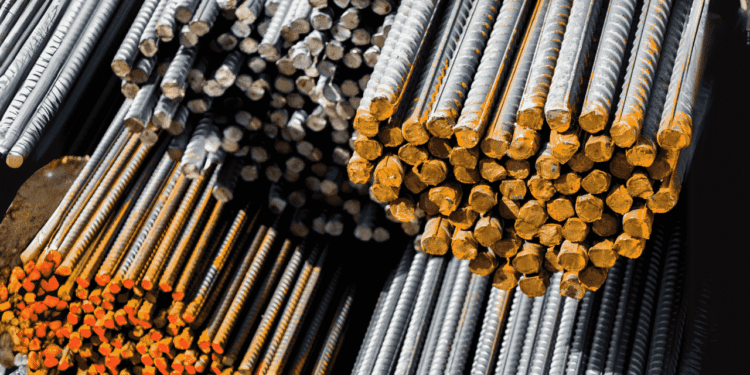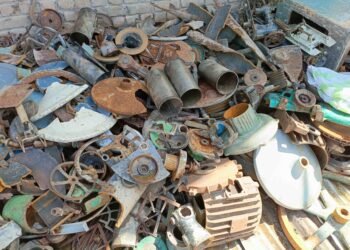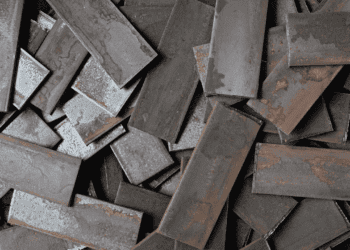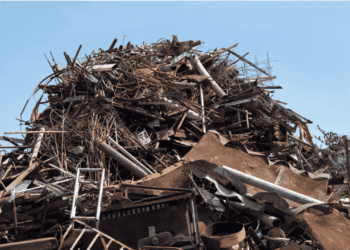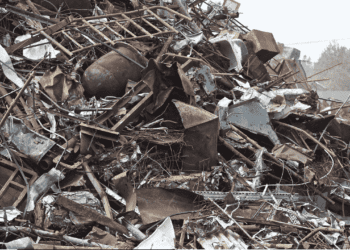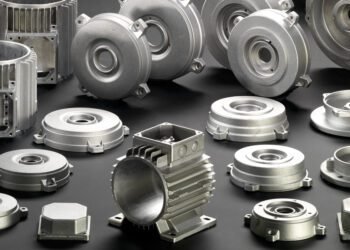Q: What is iron?
Iron is a silvery-gray metal, symbol Fe, found abundantly in the Earth’s crust. It’s known for its malleability and forms a reddish-brown rust when exposed to air. Essential for life, iron is a key component of hemoglobin in red blood cells, aiding oxygen transport. Industrially, it’s crucial for making steel, used widely in construction and manufacturing. Historically, iron tools marked the Iron Age, transforming societies.
Join our: Whatsapp Group
Element information:
- Atomic Number: 26
- Atomic Mass: 55.845 u
- Symbol: Fe (from the Latin word “ferrum”)
- Electron Configuration: [Ar] 3d^6 4s^2
- Group: Iron is a transition metal, located in Group 8 (VIII B) of the periodic table.
- Period: Iron is in Period 4 of the periodic table.
- Appearance: Iron is a lustrous, silver-gray metal at room temperature.
- Physical Properties: Iron is solid at room temperature, with a melting point of 1538°C (2800°F) and a boiling point of 2861°C (5182°F). It has a density of 7.87 grams per cubic centimeter.
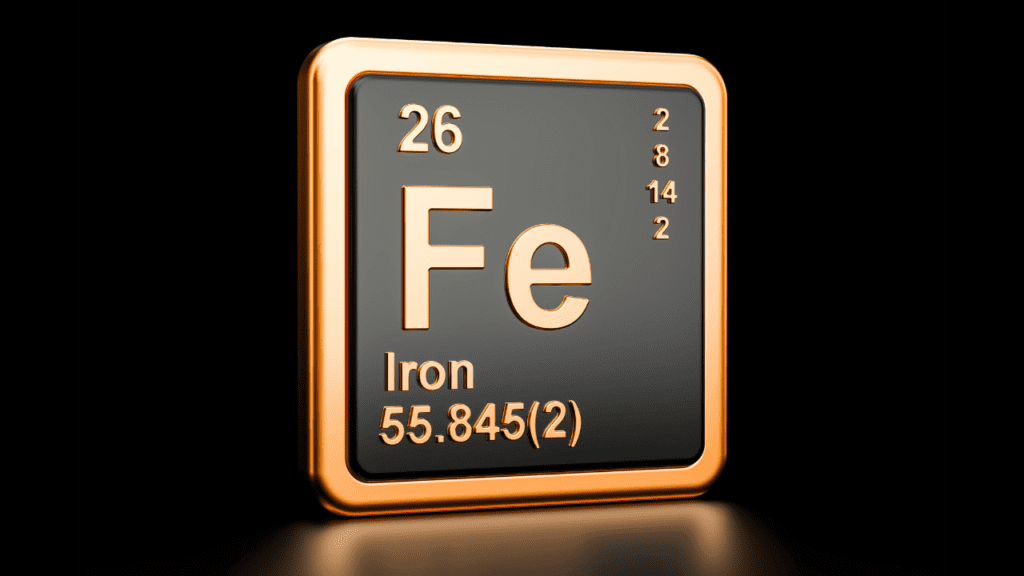
Chemical Properties:
- Iron readily forms compounds with oxygen and other elements. It is highly reactive and prone to rusting (oxidation) when exposed to moisture and oxygen.
- Isotopes: Iron has four naturally occurring isotopes: Fe-54, Fe-56, Fe-57, and Fe-58. Fe-56 is the most abundant isotope, comprising about 91.8% of natural iron.
- Occurrence: Iron is one of the most abundant elements in the Earth’s crust, making up approximately 5% by weight. Iron primarily exists in nature as iron ores, with common examples including hematite (Fe2O3) and magnetite (Fe3O4).
- Uses: Iron is used extensively in various industries, including construction, manufacturing, transportation, and electronics. It is a key component of steel, which is an alloy of iron and carbon. Steel is widely used in building structures, vehicles, machinery, appliances, and tools.
- Biological Importance: Iron is an essential nutrient for many living organisms, including humans. Hemoglobin, a protein found in red blood cells, relies on iron as an essential component to transport oxygen from the lungs to tissues throughout the body.
- History: Iron has been used by humans for thousands of years. It played a crucial role in the development of civilizations, serving as a material for tools, weapons, and infrastructure.
.
Types of Iron:
Iron exists in several forms, each with its unique characteristics and applications.
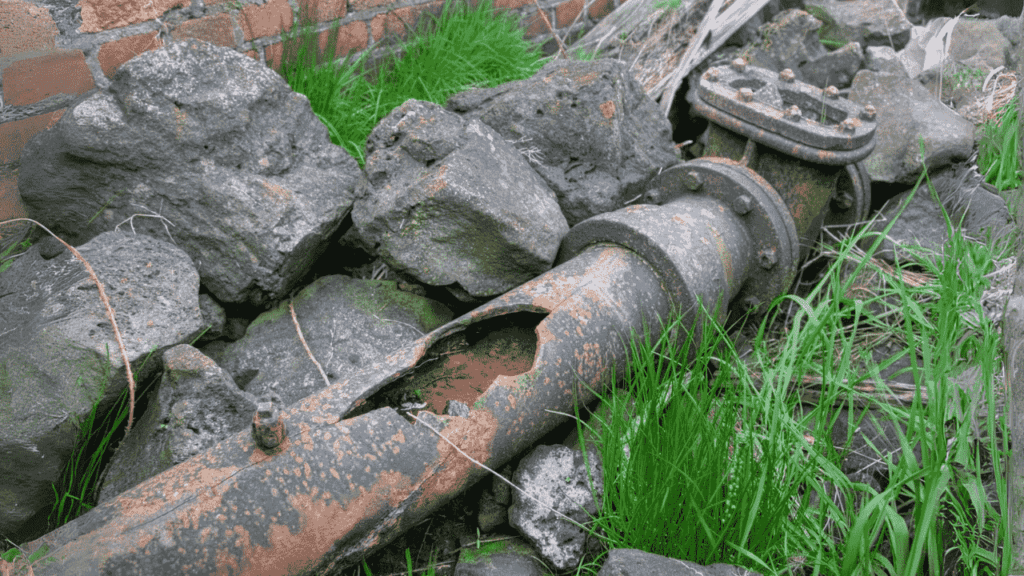
1. Wrought Iron
Wrought iron is a tough and malleable form of iron with a very low carbon content, usually less than 0.08%. It is known for its fibrous appearance when fractured and was historically used for blacksmithing, tools, and construction. Due to its low carbon content, wrought iron is more resistant to rust compared to other forms.
2. Cast Iron
Cast iron contains a higher carbon content, typically between 2% to 4%. This form of iron is brittle but has excellent compressive strength. It finds uses in cookware, pipes, and engine blocks. Cast iron’s ability to retain heat makes it ideal for cooking, as it provides even heat distribution.
3. Steel
Steel is an alloy of iron and carbon, often with other elements such as manganese, chromium, or nickel added to enhance its properties. It is incredibly versatile, used in construction, transportation, appliances, and machinery. The addition of carbon gives steel its strength, durability, and ability to be tempered to different hardness levels.
Click Here For Latest Scrap Metal Rates
Different types of steel are tailored for specific purposes. For example, stainless steel contains chromium and nickel for corrosion resistance, making it ideal for kitchen utensils, medical instruments, and architectural purposes.
Uses and Properties of Iron:
Iron’s versatility stems from its wide range of applications across various industries.
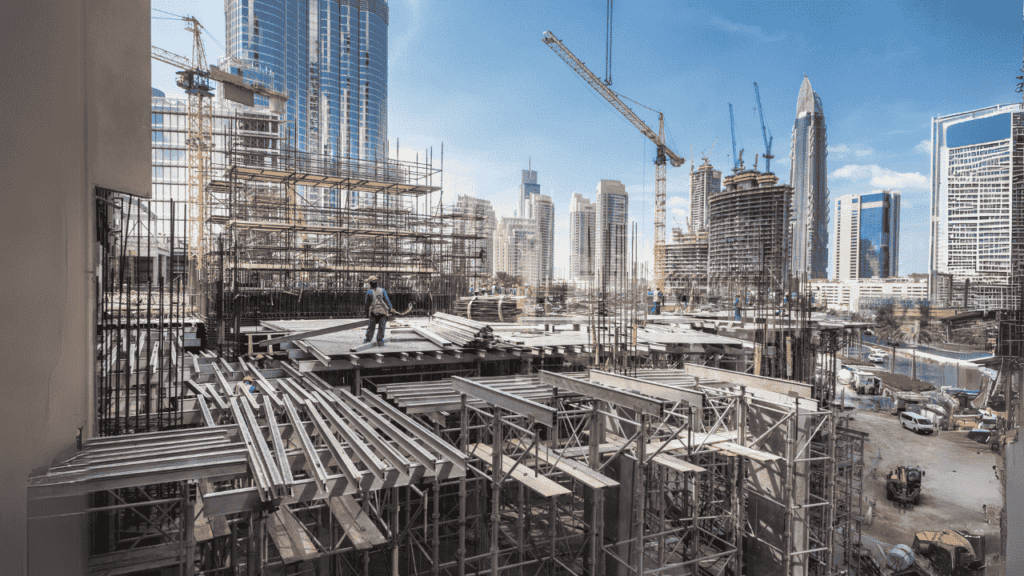
Industrial Applications
In the industrial sector, iron is indispensable for manufacturing machinery, tools, and equipment. Steel, a vital alloy of iron, serves as the backbone of infrastructure, supporting buildings, bridges, and transportation systems. The automotive industry relies heavily on iron and steel for vehicle production, from the chassis to the engine components.
Construction and Infrastructure
The construction industry relies heavily on iron and steel for structural frameworks, reinforcing bars (rebar), and beams. These materials provide strength, durability, and resilience to buildings and bridges. High-rise buildings, bridges, and stadiums stand tall due to the strength of iron and steel.
Must Read :Copper | Complete Details
Transportation
From automobiles to ships and railways, iron and steel components form the backbone of transportation systems worldwide. They offer the strength needed to withstand rigorous conditions and ensure safe travel. In aviation, iron alloys are used in the construction of aircraft, where strength and lightweight properties are essential.
Household Items
In our daily lives, iron is present in various household items, including kitchen cookware, cutlery, and appliances. Its durability and heat conductivity make it ideal for these applications. From stainless steel pots and pans to iron skillets, these items are essential in every kitchen.
Facts about Iron:
- Essential for Hemoglobin: Iron is crucial for the production of hemoglobin, the protein in red blood cells that transports oxygen throughout the body. Without enough iron, the body cannot produce sufficient healthy red blood cells, leading to anemia.
- Core of the Earth: The Earth’s core is primarily composed of iron and nickel, contributing to the planet’s magnetic field. The Earth’s magnetic field serves as a shield, safeguarding it against potentially harmful solar radiation.
- Historical Use: Iron has been utilized by humans for thousands of years. Evidence of iron artifacts dates back to ancient civilizations such as the Egyptians and Greeks.
Health, Environmental, and Side Effects
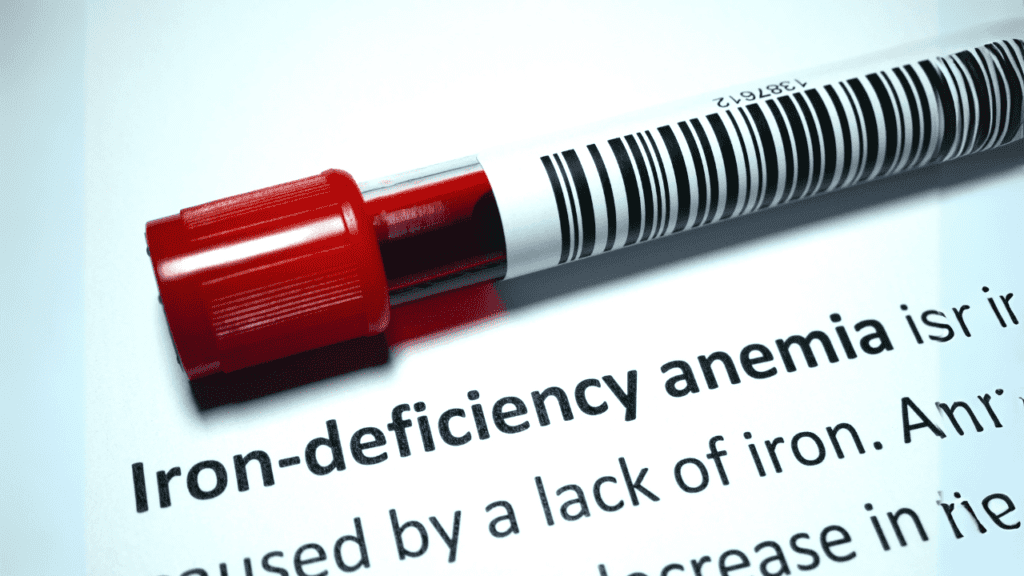
Health Benefits
Iron is vital for human health, playing a crucial role in the formation of hemoglobin and myoglobin. Adequate iron intake helps prevent anemia and ensures proper oxygen transport to tissues and organs. Iron-rich foods such as red meat, beans, and leafy greens are essential for maintaining healthy iron levels.
Also Read : Top 5 Most Common Types of Metals and Their Uses
Environmental Impact
While iron is a naturally occurring element, human activities such as mining and industrial processes can lead to environmental pollution. Efforts are made to mitigate these impacts through sustainable practices and recycling. Iron recycling is highly efficient, with recycled iron being used in various industries, reducing the need for new mining.
Side Effects of Iron Overload
Excessive iron intake, either through supplements or certain medical conditions like hemochromatosis, can lead to iron overload. This condition may cause organ damage, joint pain, and fatigue if left untreated. Regular blood tests can help monitor iron levels and prevent complications.
Discovery and History
Iron has a rich history, with evidence of its use dating back to ancient civilizations. The Iron Age, which began around 1200 BCE, marked a significant shift in human history as iron tools and weapons replaced bronze. The Hittites, Egyptians, and Assyrians were among the early civilizations to master ironworking techniques.
The discovery of smelting techniques revolutionized civilizations, allowing for the mass production of iron tools, weapons, and artifacts. Iron played a crucial role in the expansion of empires and the development of trade routes.
Scrap And Recycling of Iron:
Iron recycling, from scrap metal to discarded products, is vital for conserving resources and minimizing environmental impact. Here’s a look into this process:

Collection and Preparation
- Scrap Metal Collection: Scrap iron is gathered from old cars, appliances, and industrial waste.
- Shredding and Melting: Scrap iron is shredded, removing contaminants, and then melted in furnaces.
Types of Iron Recycling
- Electric Arc Furnaces (EAF): Uses electrical energy to melt scrap iron for steel production.
- Basic Oxygen Furnaces (BOF): Combines scrap iron with raw materials for large-scale steel manufacturing.
Also Check : LME : London Metal Exchange | Complete Details
Benefits of Iron Recycling
- Conserves Resources: Reduces the need for new iron ore, preserving natural resources.
- Reduces Waste: Diverts scrap from landfills, managing waste more sustainably.
- Economic Advantage: Creates jobs and offers cost-effective alternatives to new iron production.
Challenges and Innovations
- Efficient Sorting: Advanced technologies like magnets and sensors improve metal separation.
- Environmental Impact: Innovations focus on purifying molten iron and reducing emissions.
The Future of Iron
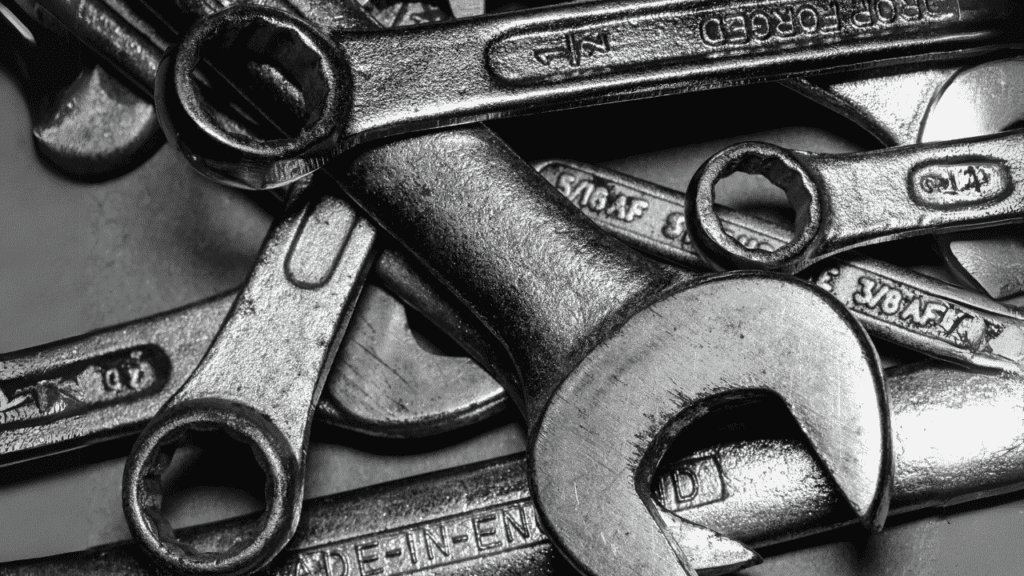
Looking ahead, iron and its alloys will continue to be essential materials for technological advancements, infrastructure development, and sustainable practices. Innovations in iron production, recycling methods, and alloy formulations will shape its role in a rapidly evolving world.
Researchers are exploring new applications for iron, such as in renewable energy technologies and medical devices. Iron nanoparticles, for instance, show promise in targeted drug delivery and cancer treatment.
Iron remains a cornerstone of modern society, with its strength, durability, and versatility ensuring its enduring importance across industries and everyday life.
Visit Our Prices Page For Latest Metals Rates
FAQs:
1. What is iron and why is it important?
Iron is a vital element in our bodies, helping transport oxygen and preventing anemia.
2. What are the types of iron?
- Wrought Iron: Tough, used in old tools.
- Cast Iron: Strong, often seen in cookware.
- Steel: Versatile, used in construction and cars.
3. How is iron used daily?
Iron is in machinery, buildings, transportation, and household items like cookware.
4. What are the health benefits of iron?
It helps prevent anemia, found in foods like meat and leafy greens.
5. How does iron affect the environment?
Mining and industry impact it, but recycling helps reduce new mining.
Join our: Whatsapp Group
6. What are the risks of too much iron?
Excess iron can harm organs, cause fatigue, and joint pain.
7. What’s the history of iron?
Humans used iron for thousands of years, especially in the Iron Age.
8. What’s next for iron?
New technologies and uses are being explored, ensuring iron’s importance remains strong.
9. What are some common signs of iron deficiency?
Signs of iron deficiency can include fatigue, weakness, pale skin, brittle nails, and shortness of breath.
10. How is iron used in industry?
Iron is a crucial component in manufacturing machinery, construction materials, and transportation infrastructure.
Conclusion:
In conclusion, iron stands as a foundational element in our lives, offering a blend of strength, versatility, and essentiality that few other elements can match. From the ancient civilizations of the past to the modern marvels of industry and technology, iron has been a steadfast companion in our journey through time.
Its role in our health, with the formation of vital proteins like hemoglobin, ensures the oxygenation of our cells and the vitality of our bodies. Iron’s presence in our diets, from red meats to leafy greens, underscores its importance in maintaining optimal health.
In industry and construction, iron forms the backbone of our infrastructure, from towering skyscrapers to the sturdy bridges that span continents. The different forms of iron—wrought, cast, and steel—each bring their unique properties to bear, shaping the tools, machinery, and structures that define our modern world.
However, as we continue to innovate and adapt to a changing world, iron evolves alongside us. Sustainable practices in mining and recycling offer a path towards a more environmentally conscious future, ensuring that this vital resource remains available for generations to come.
As we look ahead, the future of iron holds promise and potential. New technologies, applications, and discoveries await, ensuring that this age-old element continues to play a pivotal role in shaping our societies, industries, and everyday lives.
In essence, iron remains not just a metal but a symbol of endurance, reliability, and progress—a cornerstone of civilization and a testament to human ingenuity.
So, let us continue to embrace the enduring significance of iron, honoring its past, harnessing its present, and shaping its future as we journey forward into the unknown.



